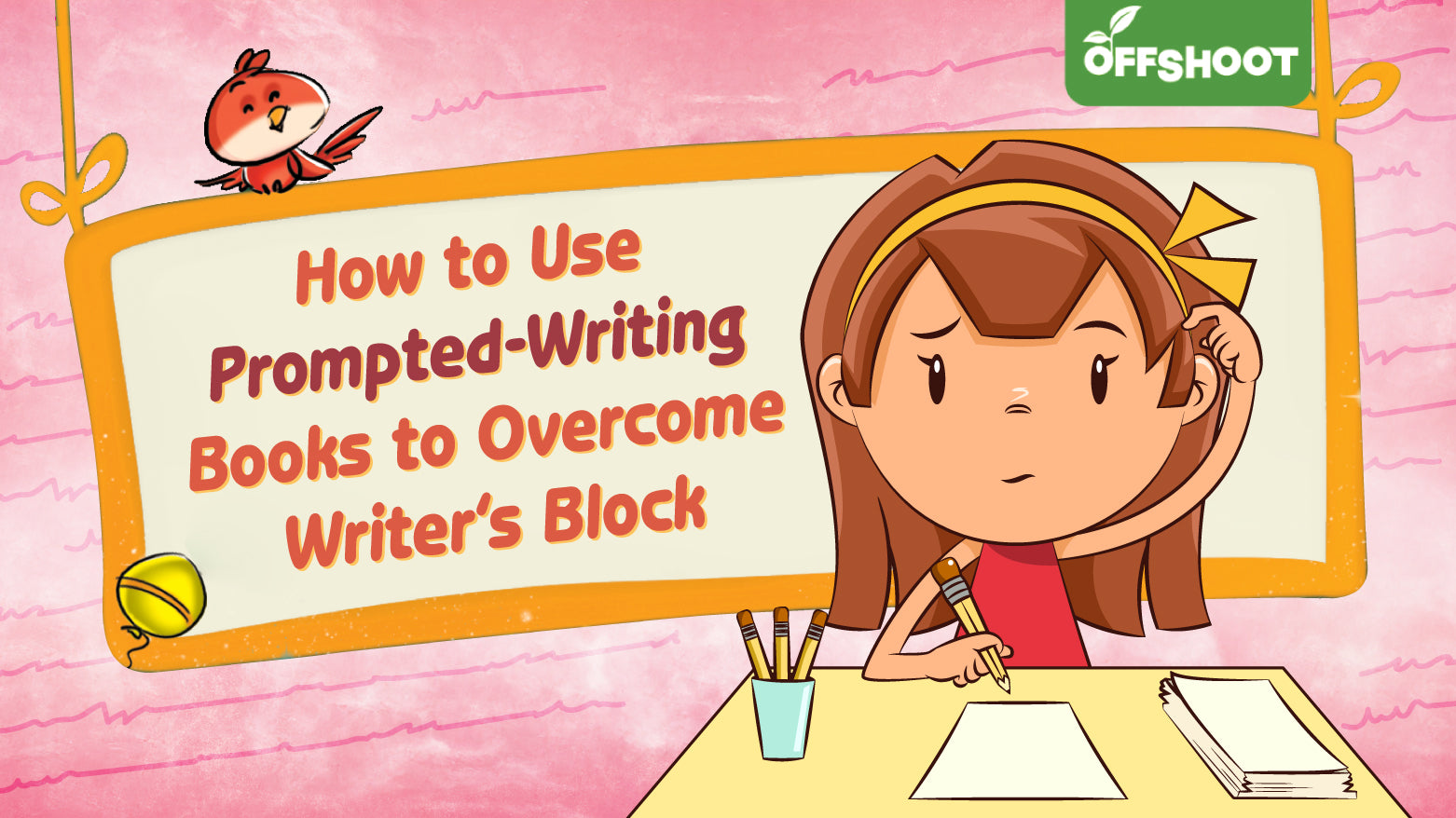
How to Use Prompted-Writing Books to Overcome Writer's Block
| Offshoot Books
Writer’s block—the dreaded moment when your mind is as blank as the page in front of you—has derailed countless creative projects. Every writer, from seasoned professionals to aspiring beginners, encounters it at some point. But what if there was a way to get unstuck, reignite your creativity and rediscover the joy of writing? Enter the world of prompt writing and the magic of prompt books. One such powerful tool to fight writer’s block is Offshoot Books' Telling Teeny Tales, a series designed to tap into your imagination and fuel your creativity.
What Is a Prompt Book?
Before diving into the specifics of how Telling Teeny Tales can help, let’s explore what a prompt book is. These are books filled with creative prompts—questions, ideas, scenarios or visual cues—that spark inspiration for writing. Whether you are asked to describe a scene, craft dialogue or imagine a character’s reaction, these prompts help guide your thoughts, especially when your mind feels like a desert devoid of inspiration.
Overcoming Writer’s Block with Telling Teeny Tales
Offshoot Books’ Telling Teeny Tales isn’t just any collection of writing prompts—it’s a series that encourages you to dive into the thrill of horror, mystery, love and friendship through writing. These not-so-teeny tiny tales unlock emotions, pushing writers to escape their routine and savour moments of solitude as they rekindle their romance with ink.
Here’s how you can use this prompt writing series to overcome the stubborn hurdle of writer’s block:
1. Reconnect with Emotions
One of the reasons writer’s block can strike is because we become emotionally disconnected from our stories. It’s easy to get lost in the mechanics of writing and forget the raw feelings that make stories come alive. Telling Teeny Tales prompts tap into those deep emotions by giving you short, focused tasks like writing a breakup song or drawing a horrific sight.
For example, in the book "I Don’t Love You," you are encouraged to explore heartbreak in its purest form. It’s not just about writing the words—it’s about diving into the complex, messy feelings that come with love and loss. These emotional exercises help reignite that passionate connection to storytelling, making it easier to flow back into a larger project.

2. Shift the Genre Focus
Sometimes writer’s block happens because we have spent too long in one genre. Telling Teeny Tales offers you a chance to switch things up by exploring a variety of genres. With books like "That’s Not Mysterious" or "That’s Not Scary," you can dip into the realms of suspense or horror even if it’s not your usual writing style.
This genre switch shakes up your thought process and encourages you to approach writing from a different angle, breaking through the monotony that may have led to your block in the first place.
3. Engage in Visual Thinking
Another approach to combating writer’s block is through visual thinking. Writing isn’t just about words—it’s also about creating vivid mental images that engage readers. Telling Teeny Tales doesn’t just ask you to write; it invites you to draw or visualise certain scenarios, such as a “horrific sight” or navigating through “a mysterious labyrinth.”
These visual prompts stimulate the creative parts of your brain that may be dormant when you are solely focused on words. When you visualise scenes before writing them, your ideas start flowing again and suddenly, that blank page doesn’t seem as intimidating.
4. Tackle Small, Manageable Tasks
Sometimes writer’s block feels overwhelming because you are staring down a massive project, unsure where to begin. One key strategy in overcoming this is to break the project into smaller, manageable parts. Telling Teeny Tales does just that by providing bite-sized prompts that are perfect for when you don’t have the bandwidth for a full-length story.
With short prompts mentioned in the book “Un-Friended”, you can complete a narrative in a single sitting, giving you the satisfaction of finishing something and building momentum. This sense of accomplishment can help you regain confidence in your writing and push through the block.
Source: Offshoot Books/Un-Friended
5. Practice Freewriting
Many tips for writers suggest freewriting as a solution to writer’s block. Freewriting involves setting a timer and writing whatever comes to mind without worrying about perfection. Telling Teeny Tales works well in this regard, as it encourages spontaneous writing in response to prompts. When you are freewriting to a prompt, there’s no pressure to produce polished work—you are simply letting your thoughts flow.
For instance, the book "That’s Not Scary" might spark an unexpected twist in your story or allow you to explore a new fear you hadn’t thought of. By engaging in freewriting, you will often find yourself writing past the block and uncovering new ideas that can fuel your larger writing projects.

Source: Offshoot Books/That’s Not Scary
Conclusion
Prompt writing through a series like Telling Teeny Tales is an excellent way to overcome the stifling grip of writer’s block. By focusing on emotions, shifting genres, engaging visually, tackling small tasks and practicing freewriting, you will rediscover the joy of storytelling. Offshoot Books' Telling Teeny Tales series invites you to savour moments of solitude, escape the humdrum routine of daily life and unleash your imagination. So, next time writer’s block strikes, reach for our prompt book and let the pen tell its own teeny tiny story.



Leave a comment
Your email address will not be published.